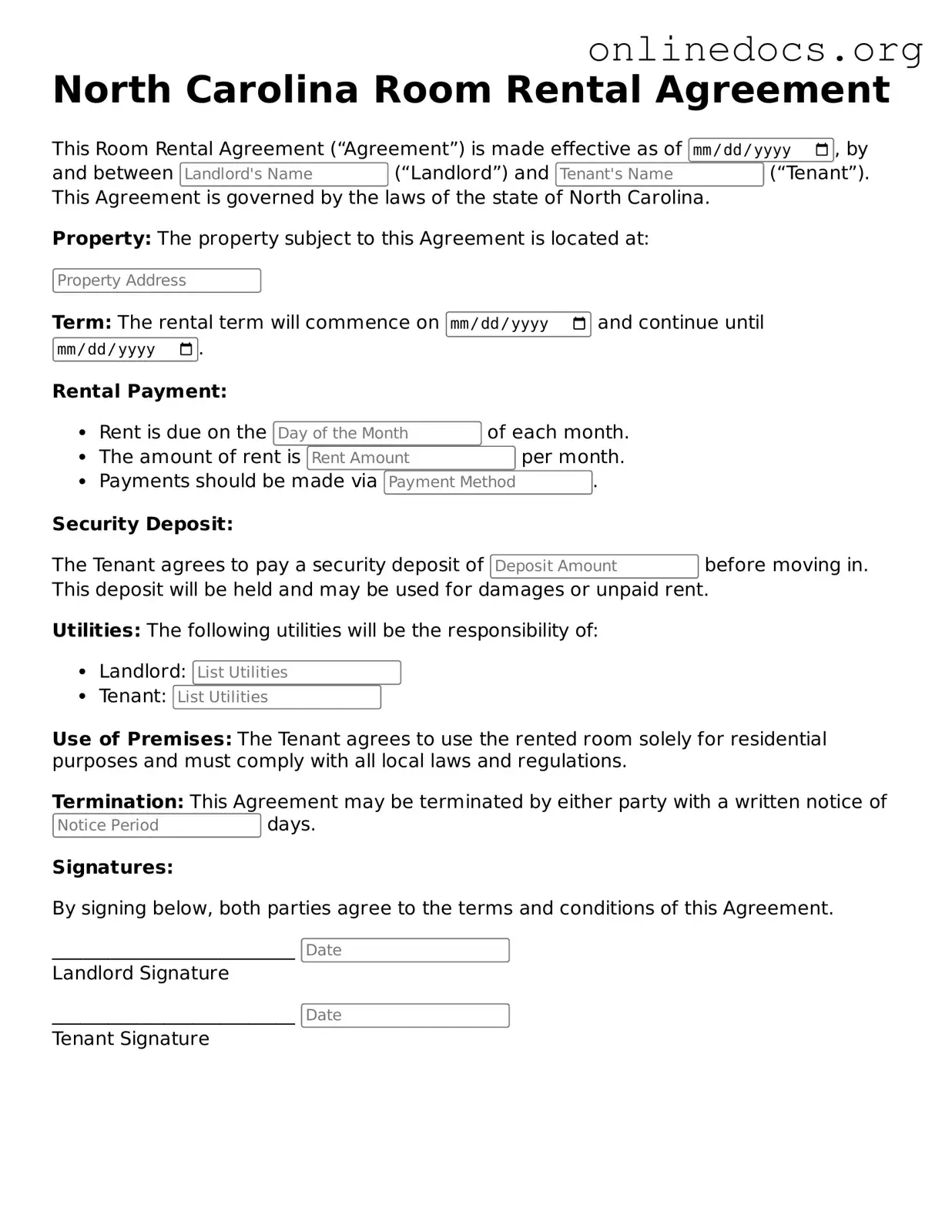The North Carolina Room Rental Agreement is similar to the Lease Agreement. Both documents outline the terms under which a tenant can occupy a property. They typically include information about the rental period, payment terms, and responsibilities of both the landlord and tenant. While a Lease Agreement is often for longer terms, the Room Rental Agreement can be for shorter stays, such as weekly or monthly rentals.
Another document that resembles the Room Rental Agreement is the Sublease Agreement. This agreement allows a current tenant to rent out their leased space to another person. Similar to the Room Rental Agreement, it specifies the duration of the rental and the obligations of both parties. Both agreements require the landlord's consent, ensuring that all parties are aware of the arrangement.
The Rental Application is also comparable. This document is typically filled out by potential tenants seeking to rent a property. It collects personal and financial information to help landlords assess the suitability of applicants. While the Room Rental Agreement formalizes the rental terms, the Rental Application is the first step in the rental process.
For those looking to protect themselves during activities, a comprehensive Release of Liability form is essential. This document ensures that individuals acknowledge and assume potential risks associated with their participation, safeguarding against future claims.
The Roommate Agreement shares similarities with the Room Rental Agreement as well. This document is used when multiple individuals share a rental space. It outlines responsibilities such as rent payment, cleaning duties, and shared expenses. Like the Room Rental Agreement, it aims to establish clear expectations to prevent disputes among roommates.
The Short-Term Rental Agreement is another related document. This agreement is specifically designed for rentals that last less than a year, often seen in vacation rentals. It includes terms about the rental period, payment, and house rules, much like the Room Rental Agreement. Both documents address similar concerns regarding the use of the property and tenant obligations.
The Commercial Lease Agreement is also comparable, though it pertains to business properties. Like the Room Rental Agreement, it defines the terms of occupancy, payment, and responsibilities. Both documents aim to protect the interests of the landlord while outlining the rights of the tenant, though the specifics may differ based on the type of property being rented.
The Eviction Notice, while serving a different purpose, is related in that it deals with rental agreements. This document is used by landlords to formally notify tenants of lease violations or non-payment of rent. It outlines the reasons for eviction and the timeframe for the tenant to respond. Both the Eviction Notice and the Room Rental Agreement are essential in the rental process, addressing tenant rights and responsibilities.
Finally, the Move-In/Move-Out Checklist is similar in its focus on the condition of the rental property. This document is used to record the state of the property at the beginning and end of a rental period. It helps protect both the landlord and tenant by documenting any pre-existing damages or issues. Like the Room Rental Agreement, it serves to clarify expectations and responsibilities regarding property condition.
